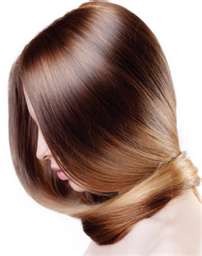When we relax back into a massaging chair and have our feet and lower legs worked on during the process of a pedicure, we are unknowingly releasing endorphins in our brain that stimulate relaxation. This stress reducing procedure of receiving a pampering service, such as a pedicure, makes us let go of a little of the stress that dominates our lives without even realizing it! Before our technician even begins our service, we are more relaxed, less stressed, and growing even more so by the minute.
During the pedicure process, critical hygiene habits are taken care of for us. Our nails are clipped, our cuticles removed, and our dead skin scrubbed away. These basic, yet often overlooked, hygiene items are important for us to maintain healthy feet and legs. When our toenails grow too long, the nail is pressed against the inside of our shoes. This can lead to ingrown toenails and bruised nail beds. When we have our cuticles removed, we are allowing our nails to breathe and continue to grow healthy nails. With the removal and scrubbing away of dead skin, we activate the regenerative properties of our own bodies in producing more skin which helps with elasticity. Many of us suffer from dry skin throughout the winter. Having a pedicure regularly throughout the year will keep dry skin at bay, at least on our feet. Applying lotion to itchy feet only compounds the problem of itchy skin. When there is a barrier of dead skin, that cannot absorb lotion, between your feet and the lotion, the lotion will 'sit' on top of that layer until worn away. This increases the feeling of 'itchiness' because your skin is smothering. The brain tells us to scratch it away so the skin can breathe again.
When you receive your lower leg and foot massage during your pedicure, your technician isn't just making you feel better at that moment. The massage they are giving you will last days. Your technician has been trained to provide a massage that will help your stress level, as well as increase your circulation, promote elasticity, and ease muscle tension. All of these things are part of a pedicure that is good for your whole body! When your lower legs and feet don't hurt, you stand and sit straighter, thus affecting your posture which will result in your back hurting less. When your feet do not hurt as much we tend to 'walk lighter' and this affects are hip movements and can alleviate lower back problems.
Getting your pedicures all year round isn't crazy talk, it is healthy. When you think about pretty toes, think about your summer pedicures. When you think about moisturized, non-itchy skin, think about your winter pedicures. (Scratchy feet in bed are never attractive.) For those of us who have the pleasure of doing pedicures on your feet, and I believe I speak for the whole industry, we would love it if you would receive regular pedicures. This has nothing to do with an increase in income or salon traffic. This has to do with the level of care that we provide to you and the short duration that cares lasts due to how hard we all are on our feet. A good pedicure will only last about a month. Therefore, if you only come in every six weeks for your pedicure, you are starting all over again every visit. That means we, as technicians, get you looking and feeling great, then we won't see you again for six months when we will have to start all over. As important as it is to us that our work and level of dedication not be ignored, it is equally important that your health not be ignored by you.













